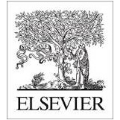The NLP community has seen substantial recent interest in grounding to facilitate interaction between language technologies and the world. However, as a community, we use the term broadly to reference any linking of text to data or non-textual modality. In contrast, Cognitive Science more formally defines "grounding" as the process of establishing what mutual information is required for successful communication between two interlocutors -- a definition which might implicitly capture the NLP usage but differs in intent and scope. We investigate the gap between these definitions and seek answers to the following questions: (1) What aspects of grounding are missing from NLP tasks? Here we present the dimensions of coordination, purviews and constraints. (2) How is the term "grounding" used in the current research? We study the trends in datasets, domains, and tasks introduced in recent NLP conferences. And finally, (3) How to advance our current definition to bridge the gap with Cognitive Science? We present ways to both create new tasks or repurpose existing ones to make advancements towards achieving a more complete sense of grounding.
翻译:国家语言方案社区最近对促进语言技术和世界之间的相互作用表现出很大的兴趣。然而,作为一个社区,我们广泛使用该术语来指将文本与数据或非文本模式联系起来的任何方面。相反,认知科学更正式地将“背景”定义为确定两个对话者之间成功交流需要哪些相互信息的过程 -- -- 这个定义可能隐含地反映国家语言方案的使用,但在意图和范围上有所不同。我们调查了这些定义之间的差距,并寻求对下列问题的答案:(1) 国家语言方案的任务缺少哪些方面?我们在这里介绍协调、权限和限制的方面。 (2) 目前研究中使用的“背景”一词如何?我们研究了国家语言方案最近会议上介绍的数据集、领域和任务的趋势。最后,(3) 如何推进我们目前的定义,以弥合与国家语言方案在意图和范围上的差距?我们提出了如何创造新任务或重新利用现有任务,以使人们更全面地了解如何定位。




